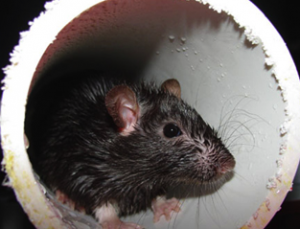Mon 28 Oct 2013
One of the Best Approaches to Rodent Control
Posted by sugarland
 In most instances, you will often notice the evidence of having a rodent problem in your home or office before you actually ever see one. And while your first inclination may be to reach for the strongest rat or mouse pellets you can find, you might want to rethink that strategy. Rodenticides will most likely kill a few of the rodents infesting your home, but they may not kill them all.
In most instances, you will often notice the evidence of having a rodent problem in your home or office before you actually ever see one. And while your first inclination may be to reach for the strongest rat or mouse pellets you can find, you might want to rethink that strategy. Rodenticides will most likely kill a few of the rodents infesting your home, but they may not kill them all.
Having rodents present in your home poses health risks to everyone in the home. Their droppings can trigger allergic reactions and asthma. The parasites that they carry can transmit disease like the bubonic plague to members of your family. And, they can track a variety of bacteria, germs, and parasites onto your food stores and dishes for you to ingest.
Fortunately there are ways to eliminate existing infestations and discourage future infestations while minimizing the use of harsh and dangerous chemicals. Integrated pest management plans can not only address your rodent concerns, but can also provide benefits for the environment as well.
Rodent Control in Acadiana
Step 1: Prevention
The first step in any successful rodent control plan is to prevent them from wanting to enter your home. In order to do that, you need to address the very reasons they want to come in. Rodents are driven to meet their most basic needs: food, water and shelter. If they can fulfill these needs in your home, they will move in and get comfortable. If they can’t find it, they will move on.
So with that being said, taking these steps will help discourage current unwanted residents while preventing future ones:
• Clean up any food or drink spills immediately.
• Remove food debris from tables, sinks, and dishes. Wash and dry dishes immediately after meals and snacks.
• Regularly pull out and clean under the stove and refrigerator to remove food crumbs.
• Store food in plastic containers with tight fitting lids rather than in their cardboard boxes which can be chewed through.
• Remove trash from your house daily and store it as far from the house as possible.
• Fix any plumbing leaks immediately to control access to water.
• Remove clutter, especially paper and other materials that can be used to make nests.
• Pick up pet food overnight.
• Seal or screen any openings that are larger than ¼ inch in diameter to prevent entry by rodents. This includes the foundation and attic as well as the main structure.
Take special care to seal up openings into your home. These include crawl space vents, damaged foundations, holes for ductwork and other equipment and other access points. Replacing damaged screens and sealing open access points will go a long way to preventing rodent infestation.
Step #2: Choosing an Elimination Method
In many cases rodents will leave your home if they cannot find a suitable food and water supply. However, if your house is located near these things where they can gather food and bring it inside, or if they have already begun to colonize your home, they may be less willing to leave. In these cases, you may need to use something to eliminate the existing rodents. The next step in your comprehensive rodent elimination plan is to choose a rodenticide that will work against the rodents you have that poses the least threat to your own health and the health of your family and pets. Glue traps are often a good way to start. These traps use super sticky glue to trap the rodent and allow you to physically remove it from your home without the use of harsh chemicals or kill traps.
Using a glue trap allows you to reduce the impact that accidental contact may have to your family or pets. Position the glue trap so that it’s in the path of the rodents. To identify the usual pathways for the rodents, it’s first important to understand that rodents do not have good eyesight, so they tend to stick to pathways that run along walls and other vertical surfaces. Also, look for concentrated areas of rodent droppings. This will tune you in to where they are hanging out. Place the glue traps out of sight and reach, but along these pathways and you will capture your unwanted guests.
The main drawback to using glue traps is that they do not kill the rodents. So, you may encounter live rodents during your inspection of the traps. This can be uncomfortable for some and potentially dangerous if you get close enough to be bitten.
Step #3: Playing It Safe
If you do end up having to use a rodenticide to kill the existing rodents, be sure that you are careful with your placement of the pellets. It is important to understand that not only are the pellets poisonous, but so are the dead rodents. Lastly, the rodenticide won’t kill the rodents immediately. They will often crawl away and die inside the walls and can cause an awful smell as they decay. This smell can be more than unpleasant for a number of days, depending on the number of dead rodents you have and where they die.
Sugarland Exterminating can help rid of these pesky little rodents. We offer rodent control services. We will work to gain control over the rodents and eliminate them from your premises. Call today; let us handle the dirty work.
